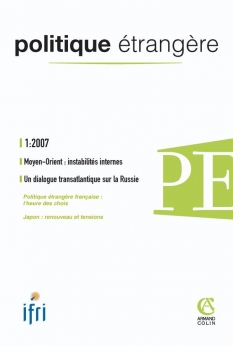
Politique étrangère n° 1/2007
Pour acheter ce numéro, contactez-nous
Recevez les numéros de l'année en cours et accédez à l'intégralité des articles en ligne.
La guerre de 2006 au Liban a révélé l’incapacité des stratégies et des appareils fondés sur la haute technologie comme le caractère sciemment mesuré de leur emploi dans les nouvelles « guerres totales ». La volonté de limiter le risque et le coût des matériels utilisés inhibent les manoeuvres des armées régulières. Pour la France, qui intervient largement dans les crises extérieures, la leçon de ces nouveaux affrontements doit être tirée rapidement.
The model of high-tech war is deadlocked. Fifteen years after the first Gulf war, the Western armies are unable to win against militias of several thousand men as in Iraq, Lebanon or Afghanistan. By laying down objectives of total war, like imposing democracy on people,Westerners have created “total” opponents. These opponents put up their ability to sacrifice as well as their imagination against our armies, which are both limited in the use of their power and becoming less and less efficient, mainly because of the exponential increase of modern armament’s costs. Within the framework of limited budgetary resources, the choice of a high-tech war can only lead to dividing the armies between a rich component, whose use is less and less likely, and a more vulnerable poor component.